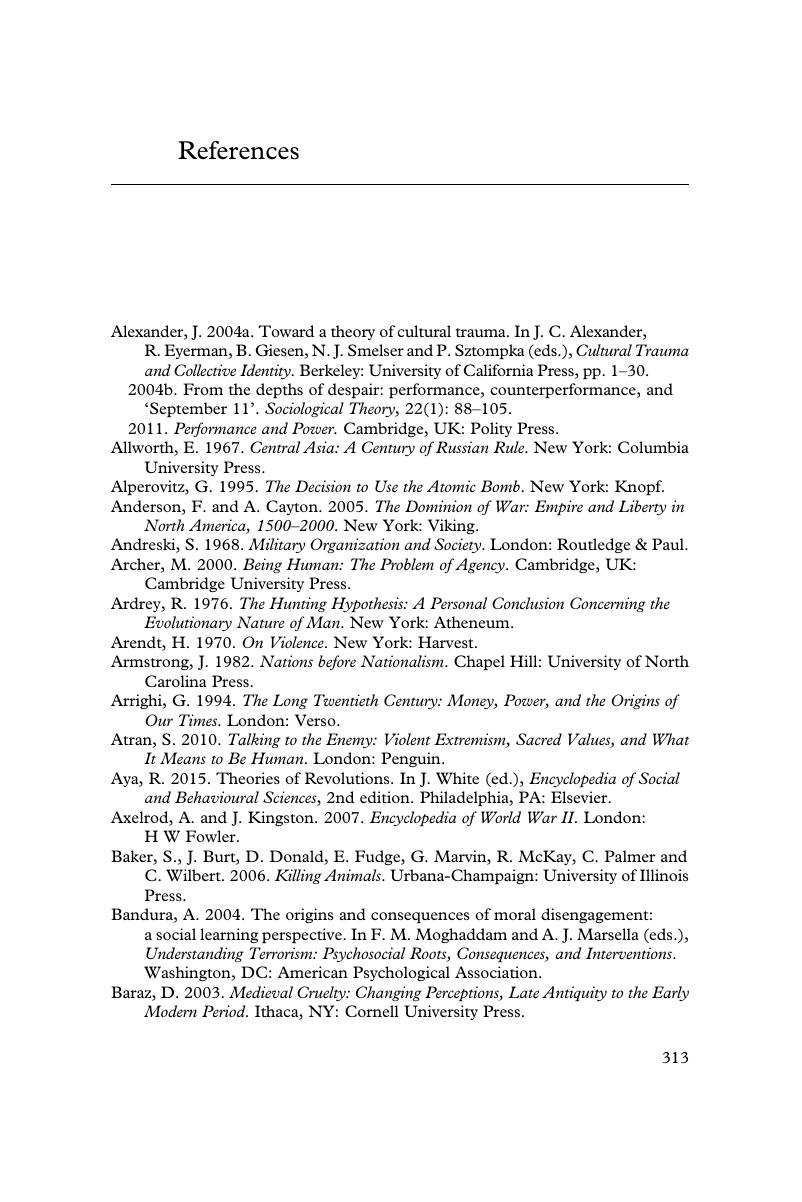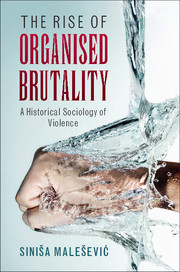Book contents
- The Rise of Organised Brutality
- The Rise of Organised Brutality
- Copyright page
- Dedication
- Contents
- Acknowledgements
- Introduction: The Faces of Violence
- 1 What Is Organised Violence?
- 2 Violence in the Long Run
- 3 How Old Is Human Brutality?
- 4 The Rise and Rise of Organised Violence
- 5 Warfare
- 6 Revolutions
- 7 Genocides
- 8 Terrorisms
- 9 Why Do Humans Fight?
- Conclusion: The Future of Organised Violence
- References
- Index
- References
References
Published online by Cambridge University Press: 13 April 2017
- The Rise of Organised Brutality
- The Rise of Organised Brutality
- Copyright page
- Dedication
- Contents
- Acknowledgements
- Introduction: The Faces of Violence
- 1 What Is Organised Violence?
- 2 Violence in the Long Run
- 3 How Old Is Human Brutality?
- 4 The Rise and Rise of Organised Violence
- 5 Warfare
- 6 Revolutions
- 7 Genocides
- 8 Terrorisms
- 9 Why Do Humans Fight?
- Conclusion: The Future of Organised Violence
- References
- Index
- References
Summary

- Type
- Chapter
- Information
- The Rise of Organised BrutalityA Historical Sociology of Violence, pp. 313 - 336Publisher: Cambridge University PressPrint publication year: 2017



